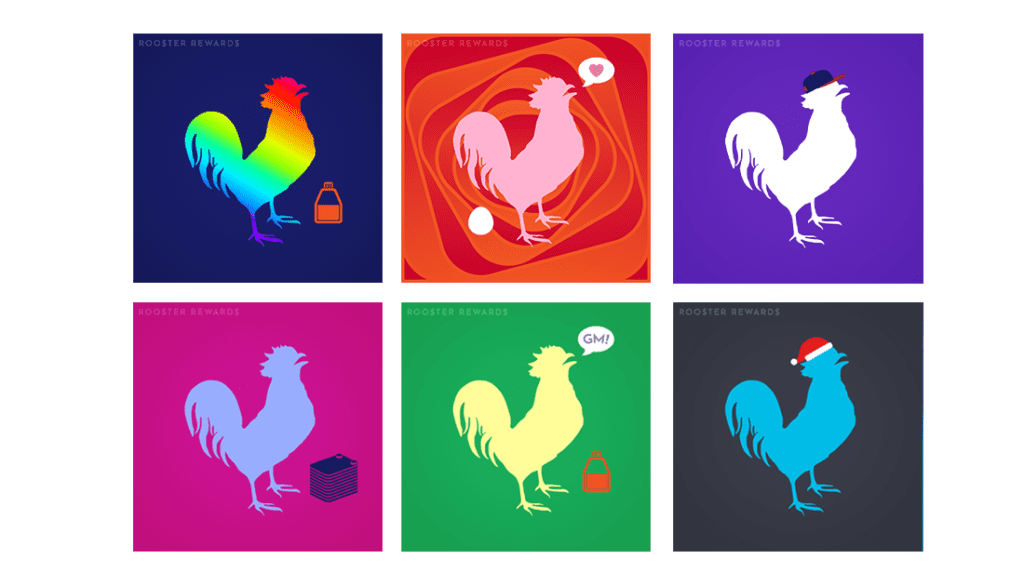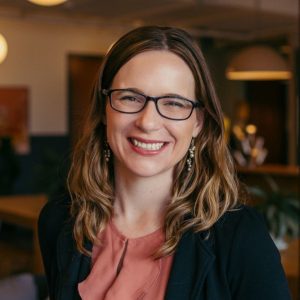
How Science and the Arts are Intermixing in the BioHealth Capital Region
It’s an age-old thinking that the arts and sciences mix as well as oil and water, with artists being stereotyped as whimsical, quirky, and creative, and scientists as analytical, awkward, and calculating. Folks who use the acronym “STEAM” instead of “STEM”, which accounts for the addition of “Art”, are often met with criticism from folks who think that the arts are not technically rigorous enough to warrant inclusion.
In recent years, however, we’ve seen the worlds of art and science coming together in incredible and often unique ways, from using interpretive dance to explain ones’ research to beautiful petri dish masterpieces to 3D-printed statues of women scientists from across the globe displayed at the Smithsonian.
And the BioHealth Capital Region is no exception to this art/science renaissance. Below are just three examples of companies and individuals in our community who are marrying the fields.
NextCure’s Vibrant Office and Laboratory Space
In Beltsville, NextCure, Inc. has taken a bold approach to decorating its office and lab spaces. Unlike some office and laboratory spaces that can be bland and boring, NextCure has created a working environment filled with vibrant colors and artistic beauty.
Each of the walls around the company’s office space are painted different hues, while paintings, statues and other pieces of art are on display, as well. Michael Richman, President and Chief Executive Officer of the company, which is focused on developing immunomedicine therapies for cancer and other immune-related diseases, explained that the reasoning behind their choices to fill the office with color and art was done so in order to “create a culture that promotes innovation and inventiveness.” He said the company’s leadership team wanted to generate excitement in employees “beyond a good cup of coffee.”

NextCure has an open-floor and open-lab concept, which allows the colorful walls and art pieces to be easily seen.
“It brings things to life,” Richman said. “The visualization stimulates the mind.”
The renaissance of the office space began with the painting of the walls different colors. But that wasn’t where it ended. Richman said the company leaders then decided that there was a need for visual impact. They then began to include other artistic pieces, including paintings, sculptures of metal, tapestries, quilts and more. The work is hung or displayed throughout the facility. As trends in art evolve, so too does NextCure’s office space. Some of the walls are periodically repainted and sometimes employees make suggestions regarding the placement of the works of art.
“Sometimes it gets moved around as people think the different pieces will work better with different wall colors,” he said.
Many of the pieces are sourced from local artists or have been created by the NextCure employees, Richman said. By incorporating locally-created pieces, Richman explained that it helps to build a strong sense of community.
“Having local artists helps tell a story about the village, the community we are trying to create,” Richman said.
The company finds artists through various means, including word of mouth and the online marketplace, Etsy. Richman also said the company sought out local artists from the Ellicott City area who experienced difficult times due to the floods that devastated the community last year.


Not only has NextCure’s emphasis on art bolstered the daily work environment at the office, art was also used to lift the spirits of its employees during the worst days of the pandemic. Richman said the company created an indoor park within its office space. They brought in outdoor furniture and plants. A muralist came in and created some wall art, a DNA-helix that evolved into a tree with various symbols, from the iconic Maryland flag to various cells of the immune system. Inspirational quotes were also painted on the wall.
“It made it interesting for people to walk around in a socially-distanced manner, Richman said.
A Rockville, MD-based Medical Illustrator is Bringing Science to Life
Too often we see scientific pathways and concepts represented by boring, lifeless 2D Powerpoint ovals and squares, with arrows pointing every which way to show movement or steps in a process. While these schematics do get the point across, they don’t do the magic of biology justice.

Enter medical illustrators such as Veronica Falconieri Hays, who has run her own illustration and animation business, Falconieri Visuals, since 2014. Veronica is a Certified Medical Illustrator who earned her Masters of Arts in Medical And Biological Illustration from the Johns Hopkins School of Medicine in Baltimore.
“I had always loved both art and science, and excelled at both in school. As I began to think about college though, I thought that I would just have to choose one, art or science, to the exclusion of the other,” said Veronica. “Then, through pure luck, I heard of the field of medical illustration through family members who met a few at a conference they were attending – and that’s when I knew that it was the perfect solution to marry both my interests.”
Her work has not only won numerous awards, but it’s also been featured on the covers of scientific journals and magazines alike.
Take a quick peak at Veronica’s portfolio, and you’ll be dazzled by beautiful illustrations and animations, including…
- A visual guide to how the SARS-CoV-2 virus infiltrates cells, and how our immune system tries to fight back.
- A dynamic 3D image depicting inflammasome assembly, which plays an important role in innate immune system activation.
- An animation showing how oncolytic viruses are administered into the body and selectively kill tumor cells.
- A depiction of how IgA antibodies can target viral particles and rally the immune response.
Veronica works closely with researchers and life science companies both big and small across a wide array of scientific disciplines, from complex molecular biology to anatomy and physiology to materials science, brainstorming together with them to conceptualize how to illustrate and animate scientific concepts. She then digs deep into the research, diving into literature and utilizing tools like the PDB Protein Data Bank and AlphaFold to understand all the nuances of how proteins and molecules move, bend, and interact with one another.
“I love problem solving. Whether it’s planning a project for a client who has a certain timeline and certain goals, or figuring out how to technically execute a detail within a mechanism of action animation, it’s immensely satisfying to come up with solutions,” added Veronica. “I’m constantly learning new things all the time because I’m working with scientists at the cutting edge of research and understanding the details of their science so I can visually communicate it. There’s also always something new to learn about digital art – new software and techniques.”
One of Veronica’s most recent projects was for Orna Therapeutics, a Boston-based company that is developing circular oRNA™ therapies that can potentially overcome the challenge of traditional linear mRNA therapeutics. The vibrant 3D animation shows how Orna’s oRNA™ therapies are produced, packed into lipid nanoparticles (LNPs), delivered to cells in the bloodstream, uncoated, and translated into therapeutic proteins.
“The Orna animation was a great collaboration – I was able to work directly with members of both the Orna team and their strategic partner, Verge Scientific Communications, on a script that highlighted the key concepts of their technology, and bring that to life using their branding. It ended up having some really fun shots to work on to – especially the immune cell endocytosing the lipid nanoparticles, and the ribosome initiating translation on a twisted circular RNA (oRNA) molecule,” said Veronica.
The role of medical illustrators has been particularly exemplified during the COVID-19 pandemic, when Powerpoint diagrams simply wouldn’t do in terms of communicating information about SARS-CoV-2’s biology to more general audiences. And for those who, like Veronica, similarly can’t choose between an art or science career, medical illustration is a rewarding career choice.
For those who are looking to break into the field, Veronica said, “Within North America, the Association of Medical Illustrators has great information on accredited graduate programs in medical illustration. A masters degree from an accredited program will provide a solid foundation for the diverse opportunities within the medical illustration field. And after school, be prepared to always keep learning! The science and art fields are always advancing.”
If you’re interested in having your scientific approach illustrated or animated, reach out to Veronica at [email protected].
And be sure to check out her insights and resources here, which includes insightful perspectives on how she performs her work.
RoosterBio’s NFT Community
Since 2021, non-fungible tokens, better known as NFTs, have taken the art world by storm and are seen as a key technology for the next generation of the internet, called Web3. Blockchain technology is enabling both digital ownership, as well as putting the power back into the hands of creatives. It turns out that NFTs are the killer app that will bring blockchain technology to the masses.
Capitalizing on this new popular medium of art is Frederick, MD-based RoosterBio, Inc., which is using NFTs in its current marketing strategies. Jon Rowley, founder and Chief Product Officer of RoosterBio, along with Product Specialist Trey Picou are self-described blockchain nerds. Alongside RoosterBio’s resident digital artist Kim Hastings, the team has created a collection of 333 Rooster-themed images, each with differing backgrounds and accessories, from baseball caps to cell culture flasks and more.
The RoosterBio team explained that there is a growing interest in NFTs within the biotech community, and they wanted to tap into that energy and excitement in order to engage the community around RoosterBio’s core mission of accelerating therapeutic product development. By creating their own NFTs and giving them away for free, the company is creating a community surrounding regenerative medicine known as Club RegenMed.

Just as NFTs are a new era in digital art, RoosterBio’s Club RegenMed represents a new era in next-generation cell-, gene-, tissue- and exosome-based therapies. Through Club RegenMed, RoosterBio has created a community that has married an appreciation for art and science.
“The Rooster character is really fun and the value of it is a sense of ownership and membership in the community,” Hastings said.
Each of the images Hastings and Picou created is unique. Rowley noted that some of the images contain the letters “GM,” which is crypto-slang for “good morning.” GM is used to express early-days of the blockchain community. Like crypto, RoosterBio is an early trailblazer with its approach to therapeutic cell manufacturing, Rowley said.
Currently, RoosterBio is using their NFTs as a marketing tool. Rowley said they hope the images will provide both a virtual and real-life community where people can get together and share best practices within their industry in a pre-competitive fashion. The company expects to hold technology roundtables and share educational content all under the Club RegenMed umbrella.
RoosterBio is giving away the NFTs as membership tokens to Club RegenMed for free. So far, the company has given out about 90 of the digital art tokens. The NFTs can be received for free by reaching out to [email protected].
Rowley noted that there are some concerns regarding environmental impact of NFTs and other cryptocurrencies. As such, the company selected a blockchain that has a small carbon footprint. He said sustainability is a core value at RoosterBio and “each NFT has a carbon footprint that is less than sending an email.”
- About the Author
- Latest Posts






